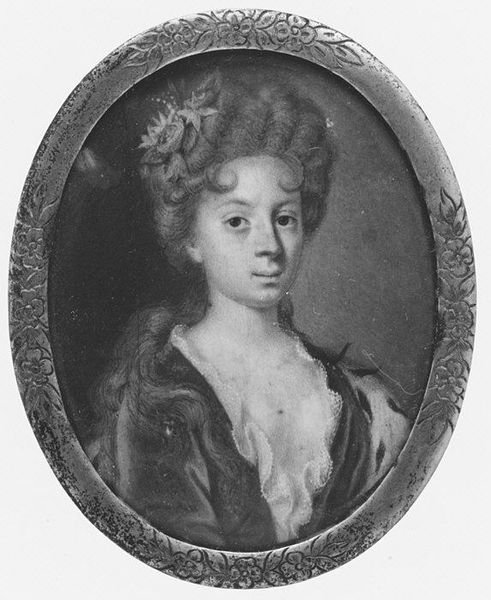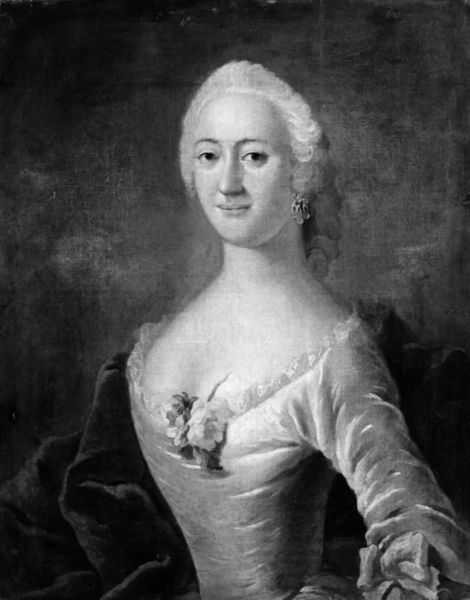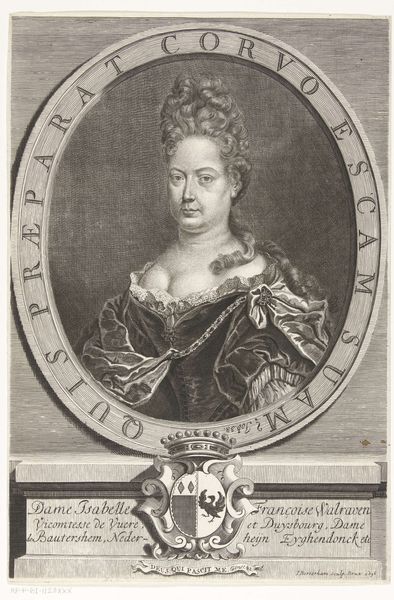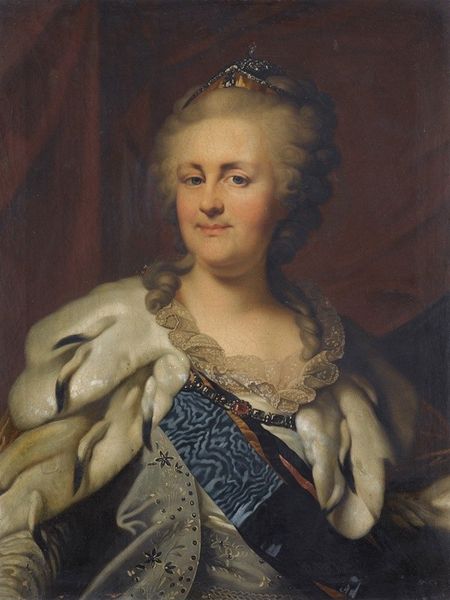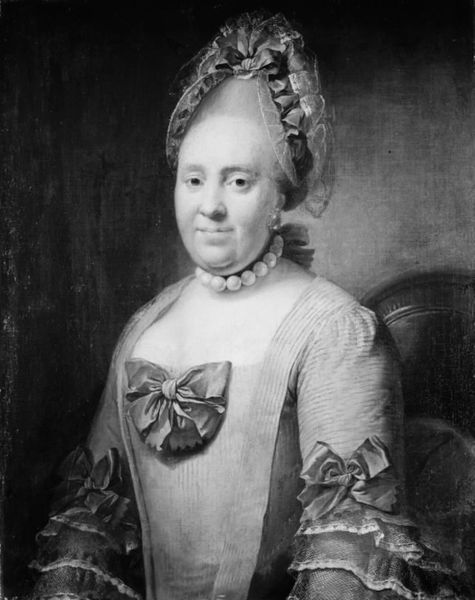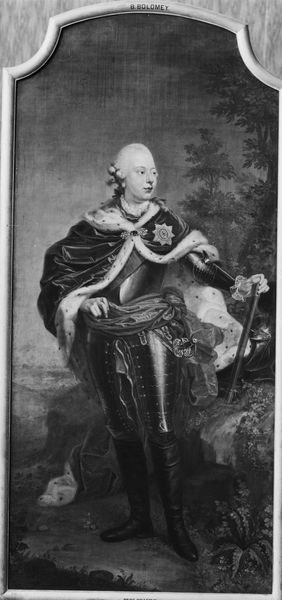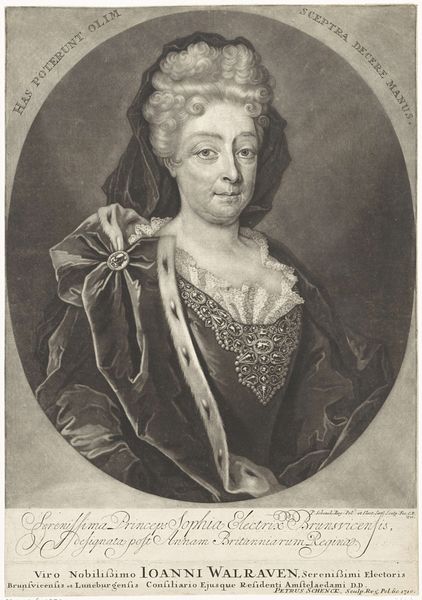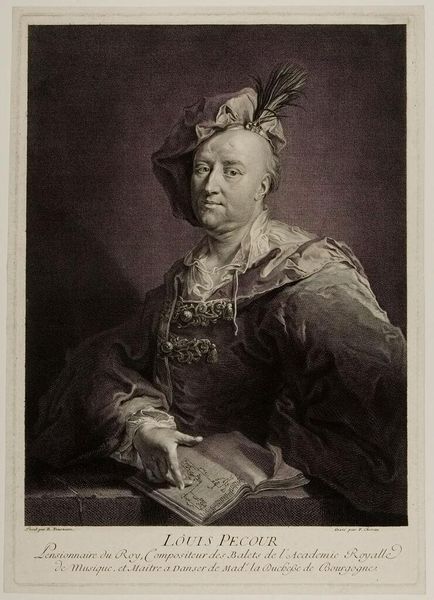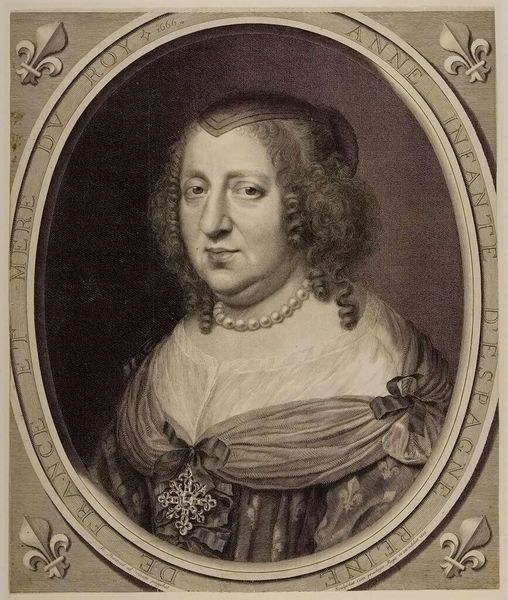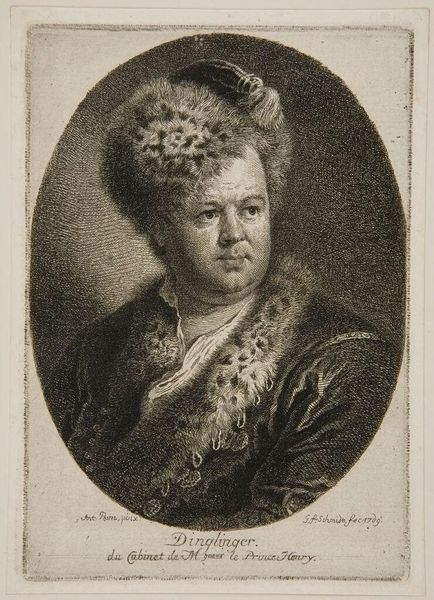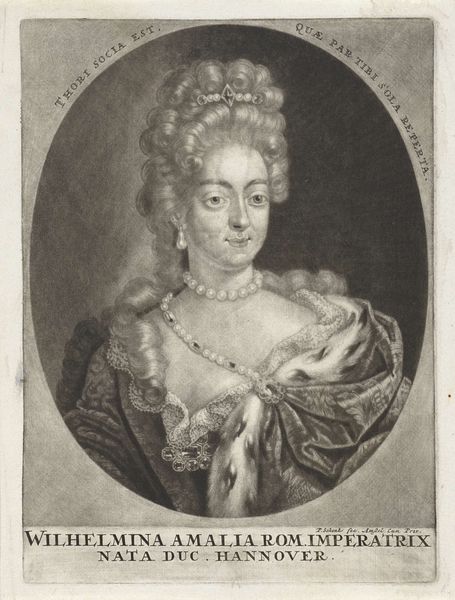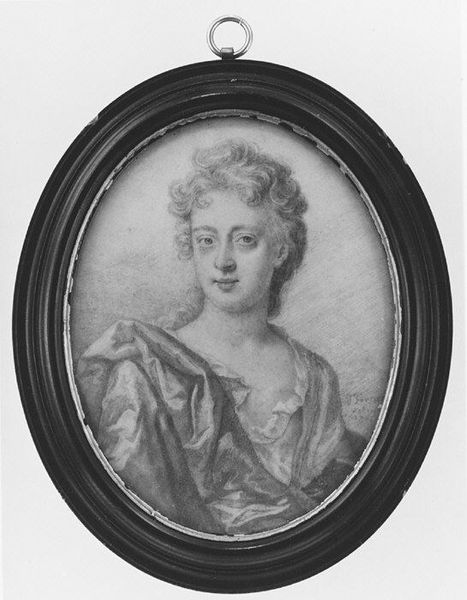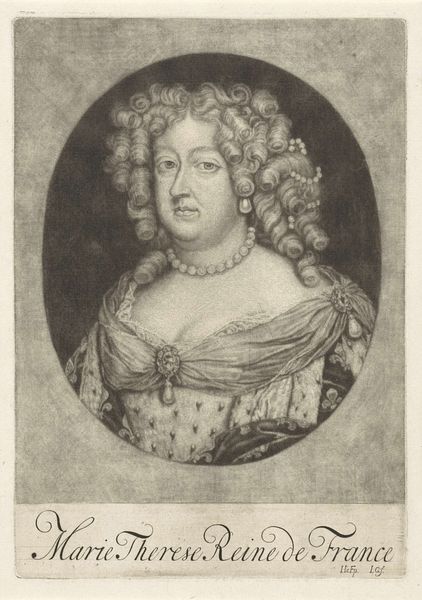
painting, oil-paint, canvas
#
portrait
#
baroque
#
portrait image
#
portrait
#
painting
#
oil-paint
#
canvas
#
history-painting
#
facial portrait
Dimensions: 44.3 cm (height) x 35 cm (width) (Netto)
Curator: Here we have on display an intriguing "Portrait of a Lady," rendered anonymously sometime between 1701 and 1715 with oil on canvas. Editor: My immediate reaction is… reserved. There's a certain formality that feels almost stifling. It’s a bit monotone for a baroque piece. The texture looks soft, though. Curator: Indeed. Let's unpack that formality. This portrait, situated within the baroque period, reflects a society deeply entrenched in hierarchy and defined gender roles. The sitter’s posture, clothing, and even her coiffure were meticulously crafted to project a specific image of power and decorum. How might her anonymity play into this? Editor: It's fascinating how absence can speak volumes. We see her garments; the ermine trim suggests privilege and status, and she wears some ornamentation at her neck. But because she’s an anonymous sitter, the portrait becomes almost an archetypal image of aristocratic femininity of that time. Those repeating visual cues solidify that reading. It allows for interpretations that move beyond individual identity and touch on collective ideas about class and beauty. Curator: Precisely. We could even interpret her relative lack of identifiable features – we are so far from having individual personalities shine here – as an effort to erase or elide certain realities that were less desirable or congruent with these standards, reflecting issues of inequality. The work almost becomes less about an individual and more a symbol of systemic concerns that uphold particular ideals around women’s beauty. Editor: You make me consider the symbols she’s adorned with in an interesting way. The gems aren’t just decoration. In many contexts gems represented both earthly and divine status, immortality, even magical properties. Curator: Right. And there’s the power in Baroque portraiture. The visual codes of that era were very strong; in some ways they told people how they should perform their own role within that society. This is less of an individual likeness, more of a societal role on display. Editor: Yes, thinking about her positioning within art history contextualizes and really brings her forward, I feel. Curator: Absolutely. This "Portrait of a Lady" serves as a poignant entry point into exploring 18th-century conceptions of identity, femininity, and representation, with lingering questions. Editor: A fitting reminder that images from the past can offer insights to question our present, don’t you think?
Comments
No comments
Be the first to comment and join the conversation on the ultimate creative platform.
